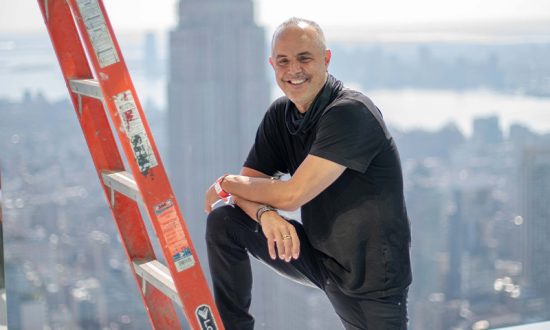Eric Yaverbaum, CEO of Ericho Communications, is a communications, media, and public relations expert with over 35-years in the industry. Eric is also a bestselling author who literally wrote the book on public relations – the industry-standard bestseller PR for Dummies – as well as six other titles including “Leadership Secrets of the World’s Most Successful CEOS“.
For better or worse, we have reached our current point in this pandemic. The point where COVID-19 is now something we as individuals have to determine how to manage, with the CDC, and subsequently individual states, relaxing most pandemic-era guidelines. Increasingly, businesses are dropping mask requirements and vaccine checks, even for those in healthcare fields.
This back-to-school season, many students and teachers at all levels are being required to return to classrooms. Some students will be returning for the first time since the start of the pandemic. In some states, such as New York, the local Education Department relaxed COVID-19 guidelines following the CDC’s announcement. Most COVID-19 restrictions have been lifted for students, outside of a vaccine requirement for teachers.
However, as much as we want it to be, the pandemic isn’t behind us just yet.
New York’s COVID-19 rates are back to being above 20 percent in some parts of the city. Much like the past two years, it’s anticipated that the winter will bring yet another surge of the virus. The CDC is working to make the COVID-19 vaccine a requirement to attend school, much like those for Meningitis and Hepatitis, but that’s still a little ways off. With that in mind, what can be done to ensure the safety of students right now as millions go back to being in-person?
While there’s plenty involved in guaranteeing students are safe against COVID-19, there is one step universities and parents can take toward student well-being. That step is effective communication.
The right communication strategies can be a simple way to give students a means of protection. Communication doesn’t have to be that complicated, either. Effective communication is simple and easy to digest, while still motivating the desired behavior. In this case, that’s getting students to wear masks when appropriate, wash their hands consistently, mitigate spreading the virus to others when sick, and take appropriate measures regarding vaccines, boosters, and other best practices.
An example could be something as simple as a sign on a classroom or residence hall door instructing the best way to wash hands. Professors could incorporate COVID-19 information into their classroom design, or those involved in residential life can plan safety-themed student activities. Some tactics can be as straightforward as giving every student a pamphlet on how to stay safe against COVID-19 in school.
There are, of course, potential risks to be mindful of when communicating strategically. When educating students on how to protect themselves against COVID-19, it’s important to avoid fear mongering or causing unnecessary panic and anxiety. We do, after all, have to find ways to live with this disease. Disseminating information while avoiding fear mongering might look like not going overboard with communicative materials, not leaning into worst case scenarios, keeping the tone positive, and even making it fun in some way. A big reason why the initial D.A.R.E program of the 1980s and 1990s failed was because its creation came out of hysteria, rather than evidence-based education. Whatever way you’re communicating – whether it’s a required presentation or a sign on a door – remember the goal isn’t to scare students; it’s to educate them on what tools they need to keep themselves safe.
And let’s not forget teachers and professors. COVID-19 is a very real disease to us all, and anyone could be put at risk. It’s important that universities, school boards, parents and students remember to have empathy for educators. Worrying about COVID-19 safety adds to daily tasks and curriculums. Educators will now have to consider the risks that still exist with this pandemic. While COVID-19 precautions are now up to the individual, that doesn’t mean we stop looking out for one another as well.
Universities have returned in full force, under pressure to recover lost revenue and maintain some semblance of normalcy when it comes to student life. More than usual, COVID-19 fears have led some students to opt for online education rather than risk in-person instruction or living in a residence hall.
While seeking online education is a great way to get a degree, it’s not the only way. Some students who might have found living on campus more rewarding may not get that experience simply because they didn’t have enough information to feel safe. This is a completely valid position to have as a student these days, but that doesn’t mean schools shouldn’t do everything they can to communicate effectively and make students who want to be on campus feel comfortable doing so. Regardless of what’s best for each individual, students should be able to make informed decisions, armed with all the facts, so that they can do what’s truly in their best interest.
For universities, everything from education to student life has changed immeasurably. There’s no going back to before the pandemic, and whether they’re commuting, living on-campus, or taking courses online, students should know how to keep themselves safe. Schools must be effective communicators to protect students, educators, and their entire campus communities.




